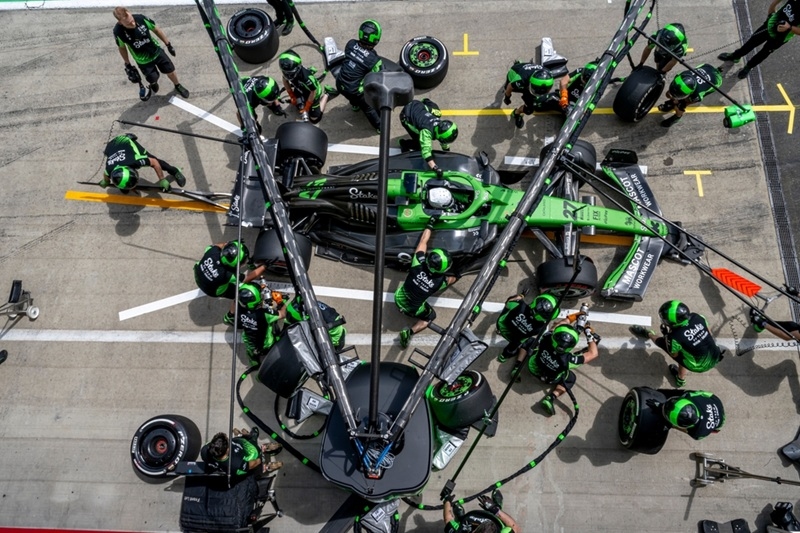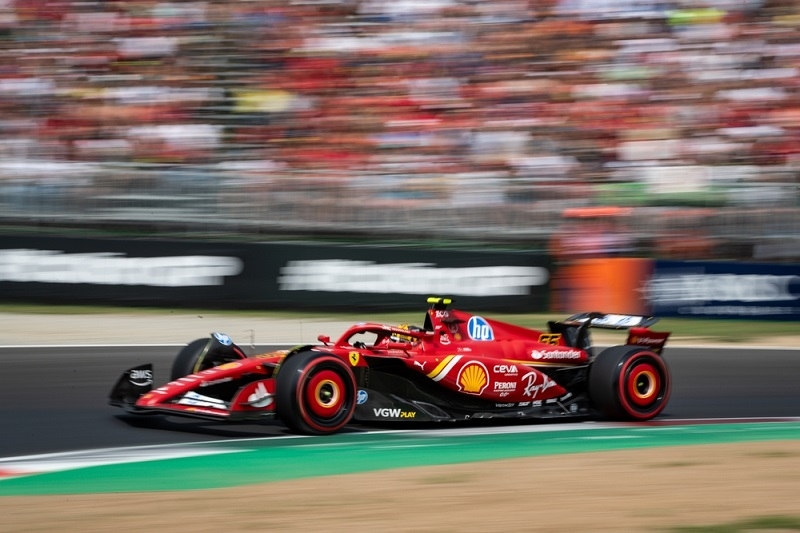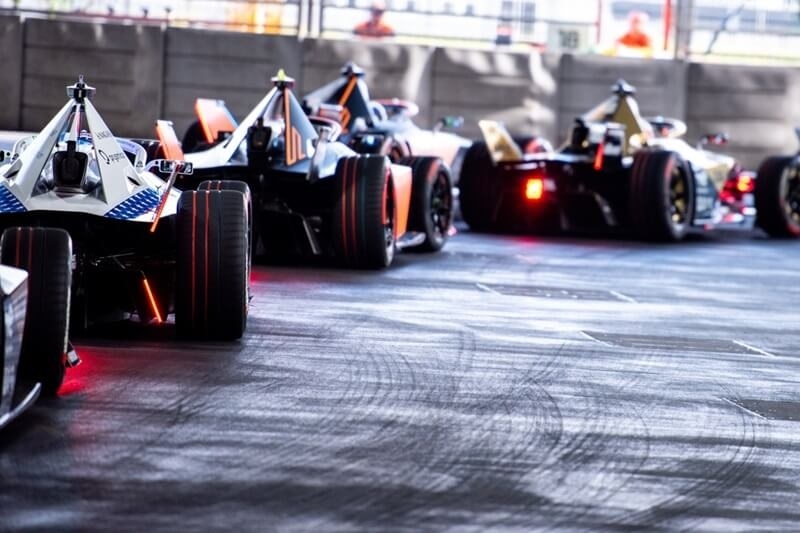F1 Pedals Explained: Which Pedals and How Do They Work?

For many, Formula 1 cars are futuristic and joystick or button-controlled machines that remind one of video games. After all, as one studies the highly intricate steering wheel of the F1 vehicles that has over 20 buttons and switches, one can easily guess that it is indeed a high-tech steering wheel. But beyond commanding sophisticated devices, a professional driver must use their feet because these F1 pedals are meticulously engineered to take in the right amount of space, speed, precision, and performance. They also teach how incredibly complicated and demanding elite motorsport driving is through their different ways of braking and accelerating at very high speeds.
Don’t miss this: Larger-Than-Life F1 LED Screen On Roof Of Paddock Building.
Do Formula 1 Cars Have Pedals?
Yes, Formula 1 cars do have pedals, but they’re quite different from those in regular road cars. Typically, F1 cars feature two pedals: one for braking and one for accelerating. There is no clutch pedal—gear shifts are handled by paddle shifters behind the steering wheel. The pedals are mounted horizontally and positioned very close together to allow quick, precise foot movements. Built from ultra-lightweight materials like carbon fiber, they are custom-designed for each driver’s comfort and performance needs. These specialized pedals play a crucial role in controlling the car’s speed and handling, especially during high-speed turns and heavy braking zones.
Anatomy of an F1 Pedal Box
A masterpiece of compact engineering, the F1 pedal box is designed to fit into the extremely tight confines of a Formula 1 cockpit. Not unlike the road cars, the pedals are arranged horizontally and are kept really close to each other so that there is minimal foot movement and, hence, quicker transitions between brake and throttle. Each pedal box is custom-made according to the preferences, shoe size, and driver's riding style. The setup is made from lightweight yet highly durable materials such as titanium and carbon fiber, with precision and responsiveness of the utmost priority. Each detail is designed to help the driver maintain full control during heavy G-forces and rapid speed changes.

Throttle F1 Pedals
With advanced precision, the accelerator of a Formula 1 car determines the engine power output depending on the driver`s desire to accelerate. Unlike a road car, the F1 throttle pedal is horizontally mounted for fast-acting footwork and is highly responsive. It is specifically custom-built for each driver to provide optimum comfort and control during fast-paced racing. Minor pressure adjustments can yield substantial variations in speed, thus requiring the drivers to exert different levels of skill in footwork. The pedal is made from light material, especially carbon fiber, to keep the weight to a bare minimum while allowing maximum responsiveness, contributing heavily to optimum performance on the arena.
Do F1 Cars Have A Clutch Pedal?
Instead of a conventional clutch pedal, one similar to those of manual cars, Formula 1 cars have hand-operated clutch controls that are located on two paddles located behind the steering wheel. These paddles are primarily used only at the start of a race and when exiting the pits; while the car is moving, the clutch is managed automatically by the car's highly sophisticated gearbox system. Such a setup would give the driver maximum efficiency in gear changes and keep his focus on handling. The absence of this foot-operated clutch system allows for space management in an already compact cockpit, further adding to the ergonomic efficiency of F1 cars.
Also, read about F1 2025 Driver Line-Up: See Who's Racing for Which Team?
Brake Formula 1 Pedals
In Formula 1, an exquisite pedal arrangement is used, and precision and power are focused on the brake pedal, which controls carbon-fired, carbon-fiber discs made to withstand temperatures exceeding 1,000 degrees. Today's Formula 1 cars rely on brake-by-wire technology for the rear brakes, thus allowing them to be under electronic control for the best balance possible.
When this happens, the driver exerts an enormous weight of more than 100 kilograms on his left foot while cornering at high speeds. The formula 1 pedals resistance, however, is quite stiff, which is exactly what you want to provide feedback and allow maximum deceleration without any loss of control in tight corners.
Why F1 Car Pedals Are Built Differently
A significant distinguishing feature of Formula 1 cars is their horizontal pedal arrangement, which is not like the vertical arrangement of regular cars. This allows for adaptation to the low-slung, aerodynamic bodies and tight cockpit spaces of the cars. Thus, both the throttle and brake pedals are placed very close together so that the range of movement of the foot from one pedal to the other is limited and can be performed rapidly. The close continuity of the footwell and controls offers more security for the driver during high Gs. This arrangement is imperative for enhancing reaction time, accuracy, and driving capability in these sports, where milliseconds would be the difference between winning and losing.
Pedals F1: Tailored to Perfection
In Formula 1, there isn't a single pedal setup that every driver mines for their individual use. Each one's throttle and brake pedals, in terms of angle, placement, resistance, and travel, are optimized to ensure certain comfort and control for the driver, in that not just pressure application would be done with precision but also at high speeds and in heavy braking zones. The pedal feel is fine-tuned by the engineers for fatigue reduction and responsiveness improvements, in collaboration with the drivers, during testing. This is a personalized feature for every driver to capture optimum performance, while the pedal box is a vital part of racing success.

How Drivers Operate Pedals During a Race
During a race, F1 drivers are essentially balancing the throttle and the brake pedals through actions like left-foot braking. This gives them the ability to control the car's balance, particularly through sharp corners, by applying brake pressure whilst still on the throttle. With precise pedal control, tire wear may be optimally managed to maximize traction and performance over long runs. This plays a significant role in overtaking, allowing drivers to brake later and get on the power sooner out of the corners. In F1, tire modulation is essential to maintain speed and stability through all this competitive stuff.
Monitoring Every Foot Movement
In Formula 1, every foot movement on the pedals is thoroughly recorded via advanced telemetry systems. Sensors register brake pressure, throttle position, and pedal timing in real time and immediately forward any of this information to engineers. Teams use the input to analyze driver behavior, car setup, and race strategy adjustments during ongoing race events. Everything engineers need to know about pedal use under all circumstances will eliminate guesswork in making precise changes that would improve performance, tire management, and fuel efficiency throughout the race.
You might like this: Experience the Thrill of F1 Grand Prix with Spectator Zone.
Conclusion
Formula 1 car pedals may look simple, but they are marvels of engineering, perfectly tailored for peak performance. Unlike regular cars, Formula 1 car pedals are compact, customized, and integrated with advanced technology like brake-by-wire and drive-by-wire systems. Drivers rely on precise pedal control to manage throttle, braking, and clutch operations during intense, high-speed racing. This seamless blend of human skill and cutting-edge design makes Formula 1 car pedals a vital, often overlooked, component in the pursuit of racing excellence.
This content was created by AI




